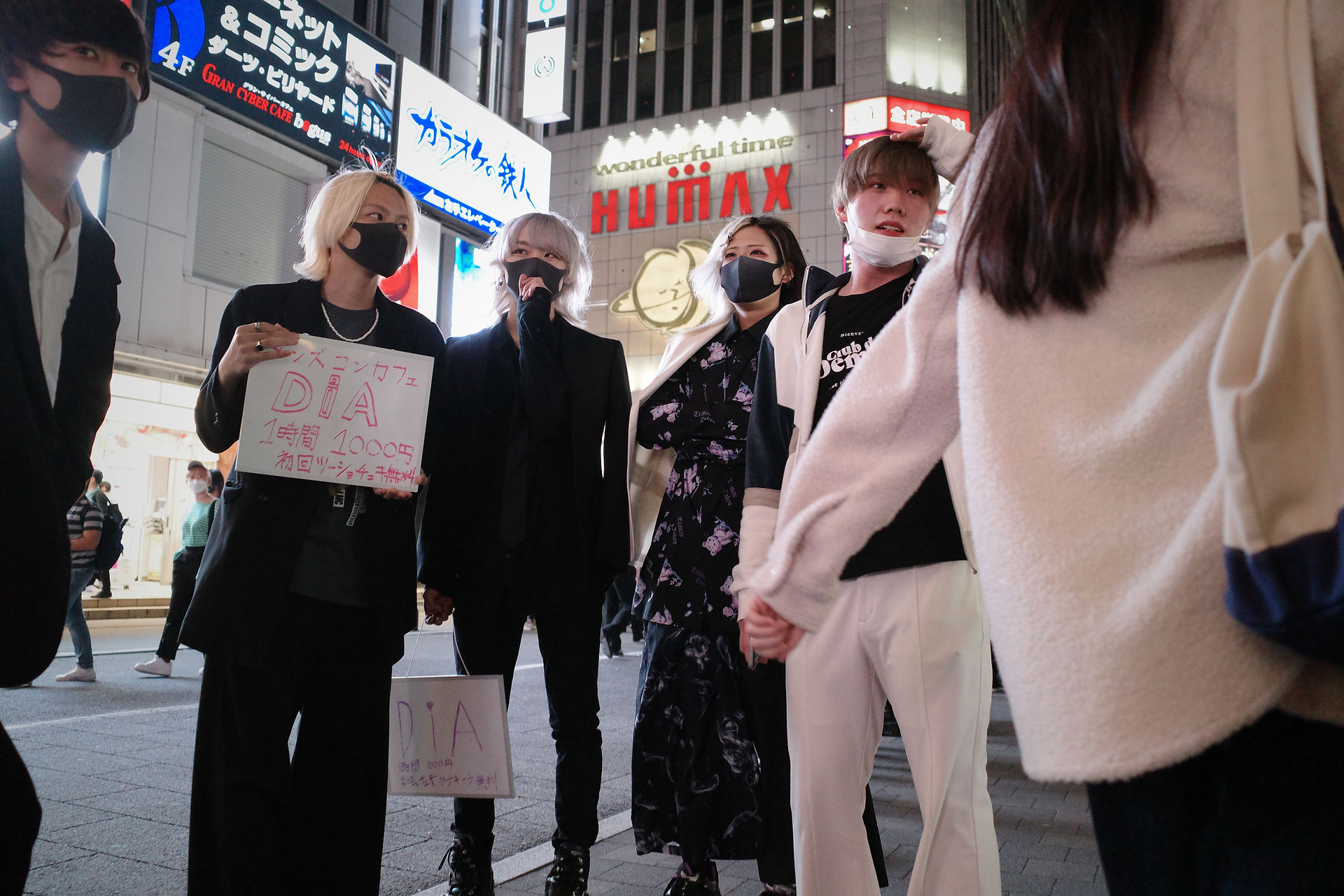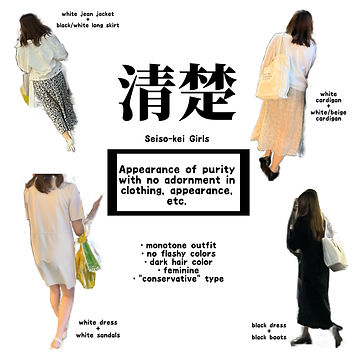
Attractive Presentation
Target: Fashion
by Manae
“Fashion reflects personality, character, mood, styles and the true colors of an individual.” (Reis et al., 2018).
Introduction
Clothing choices and color preferences all convey subliminal clues about the kind of person an individual is. Additionally, studies have proven that how one dresses can affect one’s thoughts in addition to communicating who that individual truly is as a person. Identifying the physical appearance of targets while analyzing why they are approached on scouts will bring about the personalities, character, mood, styles and the true colors of this important figure which brings prosperity to the economy of Kabuki-cho.
Most Common Fashion Styles Among Targets
1.Jirai-kei
The literal translation of “jirai” is “landmine,” which is a derogatory term that refers to a type of women that has high tendency to have violent emotional breakdowns, and also used with the meaning of “do not step on it” or “better stay away from them.” Jirai-kei style is based on a black-white, monotone, gothic style, with large, droopy eyes and tear troughs, creating an atmosphere that is juvenile, dainty, decandent, and aesthetic.

Picture of Bisque Dolls
Jirai-kei is one style trend that has caught considerable attention from the urbanities in Kabuki-cho. Jirai-kei fashion is commonly seen among To-yoko kids. To-yoko kids are famous for gathering in the hiroba next to the Shinjuku Toho Building, known for its Godzilla objet, due to the reason that they have problems or issues at home or in school. They have attracted attention due to the frequent incidents of suicide jumpers, sexual assaults, and fatal assaults in Kabuki-cho. To-yoko kids are suffering through poverty, as they can not find basic necessities for living such as food and shelter. Jirai-kei fashion common among To-yoko kids has attracted scouts as this fashion resembles poverty. Scouts are looking for girls that are wanting to earn fast money, which leads to them calling on girls in Jirai-kei fashion assuming they come from poverty.

Jirai-kei Makeup
Color preferences for this clothing style is pink, white, and black. Girls incorporate ribbons in thier outfits to impress as cute. Big ribbons and big shoes with thick soles resembling bisque dolls.

Girls in Jirai-kei Fashion
Girls in Jirai-kei fashion naturally becomes the targets of scouts because of the stereotypes listed below:
Jirai-kei fashion is worn by To-yoko kids.
Jirai-kei = To-yoko kids = Young (= in need of money)
Jirai-kei fashion started from To-yoko kids, and now there are many who imitate this type of fashion. Now, it has become one of the representative fashion styles of Kabuki-cho.
2. Revealing Girls
Girls who expose themselves in a feminine way that does not appear vulgar are also a common type scouts target. The exposed areas were mostly legs; thighs to ankles. Girls wore short skirts, dresses, or short pants to reveal their legs. Revealing, however, is not just about showing skin. Girls wearing clothes that are tight-fitting and which revealed body lines such as the hip line and breast line were also called on by scouts.
“Personality is manifested through both static and expressive channels of appearance, and observers use this informaiton to form accurate judgments for a variety of traits.” (Naumann, L. P., et al., 2009).
As Fujiwara’s study evaluated that females with high self-esteem tend to use clothing that emphasizes their individuality, while those with self-esteem tend to use clothing behaviors that emphasize social acceptance and respect (1981). From this evaluation, it can be said that girls promote confidence about their bodies when they reveal skin. Yet, this message—“I am confident about my body”— is not the idea scouts grasp when finding revealing girls.
“That clothing styles can elicit such different responses from different social groups points to yet another distinguishing feature of the clothing code and the currents of fashion to which it is subject (Davis, 1994).”
When scouts find girls revealing skin, they recieve an impression of non-conservativeness; associating this impression to every aspect of targets’ personality. Targets are intentionally dressed in revealing clothes knowing that Kabuki-cho is a city where girls are frequently called on. Scouts understand this fashion as this type of girl will be open—not protecting themselves— in other situations. This conception created by scouts of revealing girls make them an easy target.
In fashion, skin exposure is said to have a great psychological impact on others. As scouts are looking for candidates for thier business, scouts find this type of fashion useful to clearly see the lines of the girls’ body, making it obvious whether or not the girl fits in the critieria of the business.

3. Seiso-kei / Oneesan Girls
“Seiso-kei (清楚系)” is used to describe the fashion and behavior of women who have a ladylike and neat atmosphere with no adornments. Seiso-kei girls prefer long skirts and dresses to denim and other pants styles. Many of them also have long hair, which gives a sense of feminine. Girls who fall into this category are often contrasted with Jirai-kei and the casual fashion girls. Typical elements that are seen with fair skin tones, darker hair, light makeup, and feminine, conservative clothing. They are also positioned as the opposite of flamboyant, gaudy, bositerous, and sexually appealing.
“When examining the color effects of cloting from a psychological perspective, black and white represent feelings of comfort, familiarity, calmness, and relaxation (Kato, Y., et al., 2004).”
Modest and humble associates seiso-kei girls. Seiso-kei girls’ gentle and generous atmosphere attract scouts. As Kato’s study analyzes the psychological effects of color usage in fashion, she states that girls who wear colors of black and white give out a feeling of relaxation and quietness. Flashy colors such as red and yellow, which seiso-kei girls never incorporate into their outfits, represent feelings of active, vigor, and gaudy. Scouts feel more comfortable calling out girls who look more calm and soft, making it easier for them to invade their space compared to girls who look loud and energetic.
Conclusion
Through analyzing the attractive presentation of targets in Kabuki-cho, it is clear that scouts are approaching girls while understanding the needs of both their customers and business. Scouts are constantly scanning and examining girls as they looking for hints whether they can contribute to their business. Targets who fit in the scouts’ criteria are approached, sometimes convinced, and then guided into the industry of Kabuki-cho.
